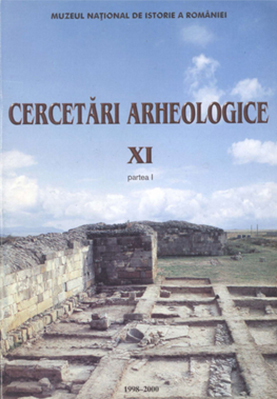Cuptoare medievale de ars ceramica descoperite la Oraşul de Floci (jud. Ialomiţa)
The medieval pottery-kilns unearthed at Oraşul de Floci, Ialomiţa county
Author(s): Anca Păunescu, Elena RenţaSubject(s): Archaeology
Published by: MUZEUL NAȚIONAL DE ISTORIE A ROMÂNIEI
Keywords: medieval pottery-kilns; Oraşul de Floci;
Summary/Abstract: During the archaeological excavation within the city Oraşul de Floci precincts were discovered the remains of two pottery kilns dated in the middle of XVII th.century. They were situated in the east boundary of the cemetery no. 5. The kilns have a circular plane with 1,50m. diameter, with two superposed rooms dug in clay, separated with a grate of clay or cast iron: the lower room-for fire, and the uppon room-for baking or dryng. The grate was sustained by a pillar situatted in the middle of the fire room. A hollow situted in front of fire-room was for feeding. We can't do a classification of kilns according to the material and technics of construction because there are just a few kilns known until now, most part of them discovered at Suceava, in Moldavia, and dated in the XV Th. - XVIt h century. But conform with the hot aer circulation to the baking room, we have three types of kilns. 1. With the grate supported of a pillar or a short wall situated in the middle of the fire room. 2. The grate supported of a step cut in the wall all around of the room. 3. The grate supported of radial arms. The fragments of pottery unearthed around the kilns "belonged to some handle pots, decanters on round feet, bowls, plates, stoves and hollow-tiles. Similar pieces to ours are those found out in Bucureşti, at the churches Mihai Vodă and Sf.Gheorghe, dated in XVIIt h century.
Journal: Cercetări Arheologice
- Issue Year: XI/2000
- Issue No: 1
- Page Range: 175-187
- Page Count: 13
- Language: Romanian

